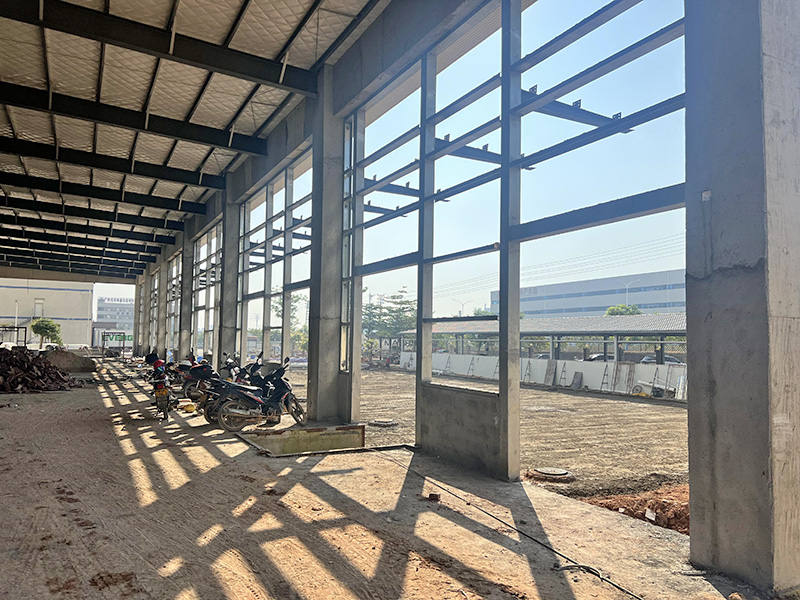Build quality steel structures
Service Hotline:
Welcome to the website of Guangdong Hongzhuo Steel Structure Engineering Co., Ltd.!
Build quality steel structures
Service Hotline:

1) Preheating can slow down the cooling rate after welding, which is conducive to the escape of diffused hydrogen in the weld metal and avoid hydrogen-induced cracks. At the same time, the hardening degree of weld and heat affected zone is reduced, and the crack resistance of welded joint is improved.

2) Preheating can reduce welding stress. Uniform local or overall preheating can reduce the temperature difference (also known as temperature gradient) between the welded parts of the welding area. In this way, on the one hand, the welding stress is reduced, and on the other hand, the welding strain rate is reduced, which is conducive to avoiding welding cracks.
3) Preheating can reduce the constraint of welded structures, especially the constraint of Angle joints. With the increase of preheating temperature, the crack incidence decreases.
The selection of preheating temperature and interlayer temperature is not only related to the chemical composition of the steel and electrode, but also related to the rigidity of the welding structure, welding method, environmental temperature, etc., which should be determined after considering these factors.
In addition, the uniformity of the preheating temperature in the thickness direction of the steel plate and the uniformity in the weld area has an important influence on reducing the welding stress. The width of the local preheating should be determined according to the constraint of the welded parts, and it should generally be three times the wall thickness around the weld area, and not less than 150-200 mm. If the preheating is not uniform, not only will not reduce the welding stress, but will increase the welding stress.
The purpose of post-welding heat treatment of steel structure is three: eliminating hydrogen, eliminating welding stress, improving weld structure and comprehensive performance.Post-welding dehydrogenation treatment refers to the low-temperature heat treatment after the completion of welding, when the weld has not been cooled to below 100 ° C. The general norm is to heat to 200~350 ° C and hold for 2-6 hours. The main function of hydrogen elimination treatment after welding is to accelerate the hydrogen escape in the weld and heat affected zone, and the effect of preventing welding cracks in low alloy steel is very significant.
In the welding process, due to the non-uniformity of heating and cooling, as well as the constraint or external constraint of the component itself, after the welding work is finished, welding stress will always be generated in the component. The existence of welding stress in the component will reduce the actual bearing capacity of the welded joint area, produce plastic deformation, and in serious cases, it will lead to the destruction of the component.
Stress relief heat treatment is to reduce the yield strength of the welded workpiece at high temperature to achieve the purpose of relaxing the welding stress. There are two common methods: one is the overall high temperature tempering, that is, the whole weldment is placed in the heating furnace, slowly heated to a certain temperature, and then held for a period of time, and finally cooled in the air or in the furnace.
80% to 90% of the welding stress can be eliminated by this method. Another method is local high temperature tempering, that is, only heating the weld and its nearby area, and then cooling it slowly to reduce the peak of welding stress, so that the stress distribution is relatively smooth, and the purpose of partially eliminating welding stress.
Some alloy steel materials after welding, the welded joint will appear hardened structure, so that the mechanical properties of the material deteriorate. In addition, this hardened structure may lead to joint failure under welding stress and hydrogen. If after heat treatment, the metallographic structure of the joint is improved, the plasticity and toughness of the welded joint are improved, thus improving the comprehensive mechanical properties of the welded joint.
Telephone
0769-82669853
13925799110

Mobile Site

Mobile Site